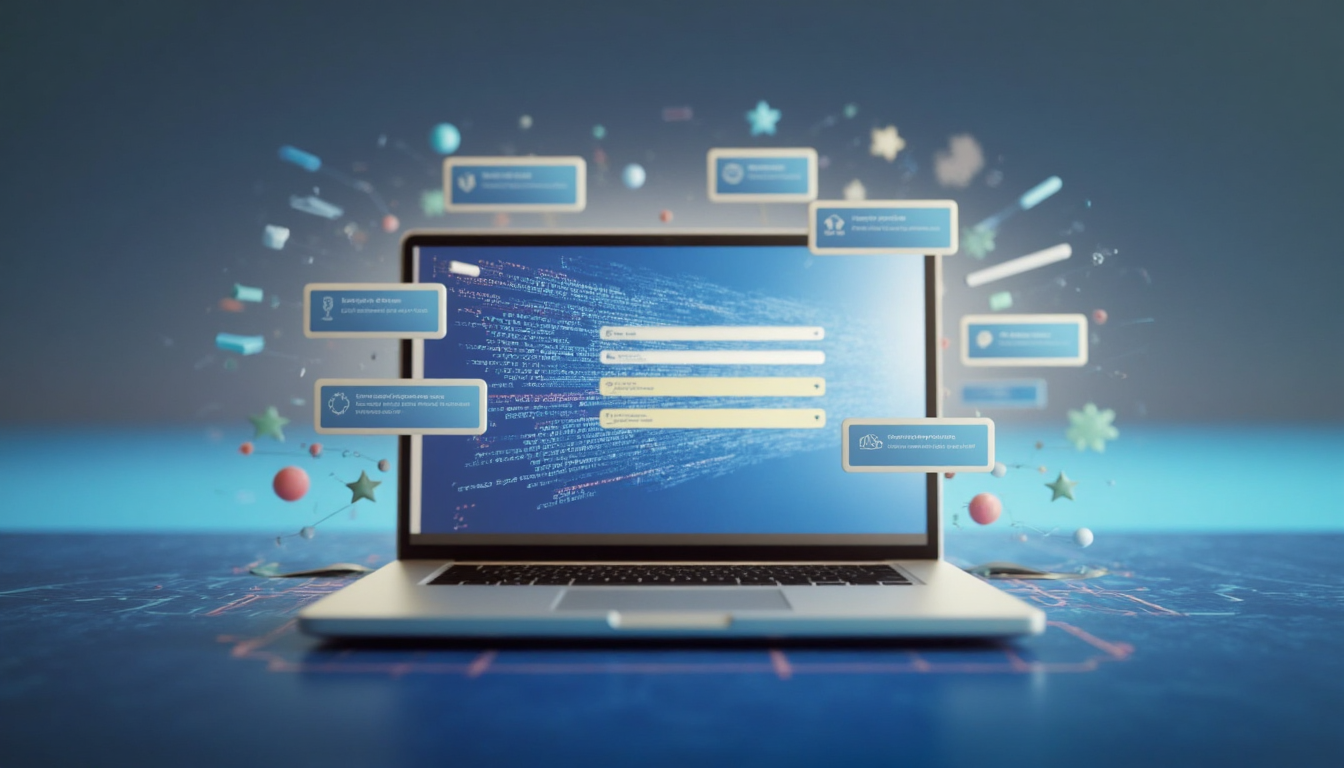The New Reality of Threat Modeling in AI-Generated Systems
.png)
Your developers are shipping AI-generated code faster than ever, thanks to tools like GitHub Copilot and ChatGPT. But your threat modeling process is still stuck in workshop mode: slow, manual, and built for a world that no longer exists.
AI-generated code doesn’t behave predictably. It introduces hidden dependencies, non-deterministic patterns, and security gaps that even seasoned engineers can miss. When you rely on manual reviews, you’re betting on human bandwidth to catch machine-speed risks.
Table of Contents
- AI-generated code has outgrown manual threat modeling
- Manual threat modeling breaks down inside AI workflows
- AI-generated code has created a new kind of risk
- AI-assisted threat modeling fixes what manual methods never could
- How to build threat modeling that keeps up with AI development
- From an experiment to a baseline requirement
AI-generated code has outgrown manual threat modeling
Engineering has changed faster than most security programs can adapt. Teams now use AI code assistants that write entire components in seconds. GitHub reports that over 40% of all new code is generated by AI, and that number keeps rising every quarter. The result is more code, more integrations, and more dependencies than any manual review process can realistically track.
In this new environment, developers often commit code they didn’t fully author. An AI tool can generate hundreds of lines in a pull request that look clean, compile correctly, and even pass basic tests. But no one in the team fully understands how that code behaves under edge cases or how it interacts with existing components. That’s where hidden risks start to appear: privilege escalation paths, insecure defaults, and unvalidated input flows buried inside AI-suggested logic.
Why manual threat modeling fails to keep up
Manual threat modeling was built for systems humans wrote and understood. In today’s AI-driven development, that baseline no longer exists.
Key breakdowns include:
- Speed mismatch: AI can generate modules or APIs in seconds, while manual modeling still takes hours or days.
- Limited visibility: Reviewers can’t keep track of fast-changing dependencies, generated code blocks, or implicit behaviors.
- Knowledge gaps: Developers no longer have full context for what the AI has written, which breaks the human understanding threat modeling depends on.
- Outdated models: By the time a threat model is complete, the underlying code has already changed.
You’ve probably seen this already. A service passes all checks, ships to production, and then triggers an incident because an AI-generated library introduced an unsafe dependency or missed an authorization check. In several recent cases, AI-written code reused outdated patterns that exposed APIs to injection or deserialization flaws, issues no one caught because they never went through a manual model in the first place.
This is why traditional threat modeling suddenly feels broken. It’s not actually about inefficiency, but the very foundation it relies on (human-authored and well-understood systems) no longer exists. The pace of AI-generated code has fundamentally changed how software is created, and security processes built for slower and predictable development simply cannot keep up.
Manual threat modeling breaks down inside AI workflows
Manual threat modeling doesn’t just struggle with AI-generated code, it actually collapses under it. The traditional process assumes predictability, stable inputs, and human-authored logic. AI-driven development removes all three.
Speed mismatch
Manual threat modeling is built around static design phases. It takes days to prepare, review, and validate each model. AI-driven workflows generate and modify code in minutes. When your system can change multiple times a day, a weekly or quarterly review cycle is irrelevant. Threat models are outdated before they’re even presented.
Incomplete inputs
Manual modeling depends on clean architecture diagrams, reviewed specifications, and stable APIs. Those inputs rarely stay accurate once AI tools start contributing code. Generated modules add new dependencies, change data flows, and alter authentication paths automatically. Reviewers end up working from snapshots of a system that no longer exists, which means gaps appear immediately after the model is created.
Context gaps
AI code generation introduces unpredictable logic. It can pull insecure snippets from training data, reuse outdated patterns, or integrate libraries without validation. Traditional models assume developers understand their codebase and can describe how each component behaves. That assumption fails when parts of the system are machine-written and lack explainability. The security team can’t identify what it doesn’t fully understand, and the threat model loses accuracy fast.
The human bottleneck
Manual modeling also depends on a limited pool of security SMEs. These experts must join design sessions, interpret diagrams, and document findings. In fast-moving AI environments, they simply cannot keep up. At best, they cover critical services and leave the rest unreviewed. At enterprise scale, this means hundreds of unmodeled components sitting in production.
AI-generated code has created a new kind of risk
AI changed what risky looks like inside your software. Traditional threat models focused on predictable human mistakes, such as poor input validation, missing encryption, and misconfigured access. AI introduces something entirely different: logic that no one intended, dependencies that appear silently, and code behaviors that shift between versions.
Unpredictable logic
AI suggests code by predicting patterns, instead of by following the team’s intent. That leads to control paths that compile and pass tests, yet violate design assumptions. You see missing guard clauses, reordered checks, or error handling that skips security workflows. In microservices, a single misplaced check can expose an internal endpoint to untrusted input. In event-driven systems, a generated handler may accept broader message schemas than intended, which widens the attack surface without anyone noticing. Traditional reviews that rely on a clean spec fall short because the code’s actual behavior diverges from the documented flow.
What to look for:
- Authorization checks placed after state changes or writes
- Input validation that accepts defaults from helper utilities without schema enforcement
- Error paths that return generic 200 responses with partial data
Training data risks
Models learn from public code that includes legacy patterns and unsafe examples. The generator can revive insecure cryptography, raw SQL with string concatenation, homegrown auth, or weak random number usage. Even when developers prompt for secure, the model may select a common but unsafe snippet because it appears frequently in the corpus. Over time, these patterns reenter modern services where no one would have introduced them by hand.
Controls that help:
- Policy-as-code checks in CI that block banned APIs and cryptographic primitives
- Unit tests that assert parameterized queries and prepared statements for data access
- Secure wrappers for crypto, secrets, and HTTP clients that the team must import
Silent dependencies
Generated code often pulls new libraries to satisfy a suggestion, which grows the graph without review. A simple helper import can introduce dozens of transitive packages, each with its own vulnerabilities, licenses, and potential for supply chain abuse. In containerized builds, these imports also nudge base images or OS packages forward, which changes runtime behavior. Manual threat models rarely reflect these shifts because they happen inside pull requests after the diagrams are drawn.
Practical guardrails:
- Lockfiles and provenance checks that fail builds on unsigned or unpinned packages
- SCA policies that block high-severity CVEs, typosquats, and deprecated maintainers
- Build attestations and SBOMs generated on every merge, diffed against the prior release
Data exposure
Prompt-based coding introduces paths for accidental disclosure. Engineers paste stack traces, partial customer data, or keys into prompts. That information can land in tool logs, IDE histories, or shared prompt libraries. Generated code may also echo secrets into config files or comments. Inference-time features like code search and chat can cache snippets across sessions if controls are loose. OWASP Top 10 for LLMs flags prompt injection and data leakage as first-order risks. MITRE ATLAS tracks techniques that target model inputs, plugins, and orchestration layers.
Risk reducers:
- Client-side redaction in IDE extensions that strips tokens, keys, and identifiers before prompts
- Secret scanners in pre-commit and CI that block merges on detected credentials
- Clear separation of model contexts for production code, with retention disabled and logging scoped
Each of these changes occurs inside everyday development activity. Logic drifts from the spec, patterns come from old code, dependencies multiply, and sensitive data moves through new channels. Manual threat modeling expects stable designs and complete human context. AI-generated code alters both. You need controls that observe real code paths, enforce secure defaults, and surface risks as the code is written and merged.
AI-assisted threat modeling fixes what manual methods never could
AI-assisted threat modeling is built for the pace and complexity of modern engineering. It doesn’t replace human expertise. Instead, it makes that expertise scalable by keeping context fresh, models current, and risk assessment continuous.
Continuous context
AI-assisted systems track your architecture, data flows, and service interactions as they change. They pull directly from the same sources your developers use, such as design docs, CI/CD pipelines, and code repositories. As a result, the threat model evolves with every commit. When an AI assistant generates a new API or a developer introduces a new dependency, the system detects it and updates the model automatically. The architecture you review is always aligned with the architecture in production.
Real-time mapping
Traditional threat modeling freezes time. AI-assisted modeling moves with it. These systems map risks as new services come online or old ones are refactored. They detect changes in authentication paths, data stores, or third-party integrations and re-evaluate exposures automatically. Instead of running periodic workshops, your team gets live visibility into how risk shifts across your environment.
Precision at scale
Manual reviews treat every change the same. AI-assisted systems prioritize based on impact. They analyze which components handle sensitive data, expose external interfaces, or introduce new trust boundaries. The model focuses human attention on what actually matters: the 10% of changes that create 90% of potential risk. This precision allows large organizations to maintain full coverage without overwhelming their teams.
Human judgment scales
AI handles the mechanical work: mapping components, identifying data flows, and matching patterns to known threats. Humans stay focused on interpretation and validation. Security engineers review context-aware findings, confirm business impact, and decide on mitigation. This collaboration turns threat modeling from a bottleneck into a continuous process that fits directly into product development.
This is what sustainable threat modeling looks like in AI-driven development. It’s fast, adaptive, and defensible. The process no longer depends on manual sessions or static documents. It runs where your code runs, evolves with your architecture, and scales human judgment across every release cycle.
How to build threat modeling that keeps up with AI development
Modernizing threat modeling is about rebuilding the process around real systems, real data, and continuous learning. AI-generated code moves fast, and your threat modeling framework has to move with it. Here’s how security leaders are doing it effectively.
Start with real artifacts
Stop designing models around theoretical architectures or outdated templates. Use the artifacts your teams already produce: source code, API specifications, infrastructure definitions, and architecture documents. These are the single sources of truth for how your system actually works. AI-assisted platforms can ingest them directly and map attack surfaces in real time. This eliminates the gap between documented design and deployed reality.
Automate model generation
Manual modeling can’t keep pace with the complexity or frequency of modern releases. Automating the foundation layer is essential. AI systems can analyze your service maps, data flows, and dependencies to generate draft models instantly. They apply risk patterns from known frameworks like STRIDE, OWASP, and MITRE ATLAS, aligning each system component to probable threats. What once took weeks can now happen in minutes, freeing your experts to focus on validation instead of diagramming.
Keep humans in the loop
Automation handles volume, but humans define accuracy. Security engineers and architects review AI-generated outputs, confirm which threats are real, and prioritize them by business impact. This ensures that the final model aligns with actual risk tolerance and compliance requirements. The validation process creates trust across teams and prevents alert fatigue from false positives.
Integrate continuous feedback
The best systems learn from every incident and every fix. Integrating feedback loops lets your threat models evolve over time. When an issue is resolved, or a new vulnerability class emerges, the AI adjusts its future predictions accordingly. Over time, this produces more accurate, context-aware models that reflect how your architecture and attack surface change.
Building this kind of system transforms threat modeling from a periodic tasks into a continuous security discipline. You get visibility that matches the speed of development, accuracy grounded in real artifacts, and a feedback-driven process that strengthens over time. The result is security that scales with your business instead of against it.
From an experiment to a baseline requirement
AI-generated development has already redrawn the boundaries of software risk. The harder truth is that most security programs are still trying to manage it with processes built for a slower era. Threat modeling can no longer be a scheduled task. It has to operate in real time and reflect the same velocity as the systems it protects.
The organizations that win this transition will treat AI as an extension of judgment instead of just automation. They will design feedback loops that keep human expertise in control while the system scales across every release.
If your threat models still live in slides or spreadsheets, the gap between code and security is already widening. Now is the time to rebuild how your teams see and manage risk continuously, contextually, and at scale.
See how it works in practice at SecurityReview.ai.
FAQ
What is AI-assisted threat modeling?
AI-assisted threat modeling uses artificial intelligence to automatically identify, map, and prioritize security risks across code, APIs, and architecture. It continuously updates as new code is generated or deployed, giving security teams real-time visibility into evolving threats.
Why is manual threat modeling no longer effective with AI-generated code?
Manual methods depend on stable architectures and human-authored logic. AI-generated code changes too quickly and introduces logic that developers may not fully understand. Static models and manual reviews can’t keep up with this speed or complexity, leading to missed risks and outdated assessments.
How does AI change the nature of application security risk?
AI introduces new risk categories. Code generated by AI can include unpredictable logic, unsafe reuse of public code patterns, and hidden dependencies. Prompt-based coding may also expose sensitive data. These issues go beyond traditional vulnerabilities and require continuous visibility to detect early.
What types of vulnerabilities are common in AI-generated code?
Security assessments often reveal missing authentication checks, insecure dependency imports, outdated encryption functions, and unvalidated data inputs. Many of these flaws appear because AI tools replicate patterns from public repositories that contain insecure examples.
How does AI-assisted threat modeling handle constant code changes?
AI-assisted platforms integrate with CI/CD pipelines, repositories, and design tools. They automatically update threat models when new services, APIs, or dependencies appear. This ensures that security reviews reflect the actual state of the system instead of a static snapshot.
Can AI completely replace human threat modeling experts?
No. AI can automate the discovery, mapping, and initial analysis of risks, but human expertise is required to validate findings, assign business context, and make prioritization decisions. The goal is to scale judgment, not replace it.
What are the measurable benefits of AI-assisted threat modeling?
Organizations that adopt AI-assisted modeling report 60–80% reductions in manual review time, faster design-stage validation, and a significant drop in unmodeled incidents. It also allows teams to maintain full coverage without expanding headcount.
How does continuous threat modeling integrate into CI/CD pipelines?
AI systems connect directly to source control, build pipelines, and architecture documentation. They analyze every pull request, detect new data flows, and highlight design-level changes that affect security posture. Security teams receive contextual alerts instead of static reports.
What frameworks and standards align with AI-assisted threat modeling?
Modern AI-based threat modeling tools reference frameworks such as STRIDE, OWASP Top 10 for LLMs, and MITRE ATLAS. These frameworks help classify risks and maintain defensible documentation for audits and compliance.
How can CISOs and AppSec leaders start modernizing their threat modeling process?
Start by using live artifacts—code, architecture diagrams, and API specs—as inputs. Implement automation to generate and update threat models, then integrate human validation for prioritization. Over time, establish feedback loops that incorporate lessons from incidents and architectural changes.








.png)





